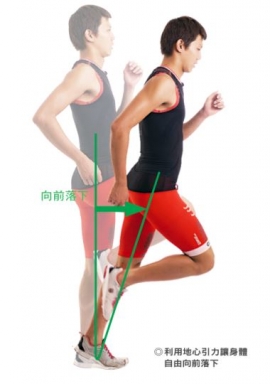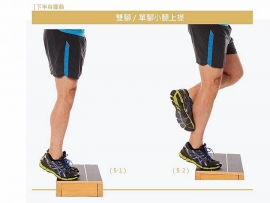首先,在进到评估之前,先来认识何谓“动力学链(Kinetic Chain)”,在Livestrong是这样介绍的:
The idea behind the kinetic chain is that every part of your body, including muscles, joints and nerves, must work together to produce movements. For example, when you perform bicep curls, the kinetic chain of this exercise is about the muscles and nerves of your arm and shoulder working together to achieve elbow flexion, and not just about your biceps muscle, which is often your primary focus with this exercise.
(动力学链背后的观念是,身体的每个部份,包括肌肉、关节与神经,一定是同心协力产生动作。举个例子,当你在做二头屈臂(Bicep Curls)的训练时,不是只跟二头肌有关,而是由手臂与肩膀的肌肉与神经同心力,产生肘屈的动作。)
而若你是耐力型的运动员,必须要注意到动力学链(Kinetic Chain)的环节,在Triathlete.com网站上有提到:
When you land while running, the force is approximately six times the force of walking. This loading force comes up through the foot, across the knee and into the hips and the back. The kinetic chain lessens the load on the skeleton. The stronger the chain, the less the skeletal load. Several studies have shown significant reduction in joint- and bone-loading force based on kinetic chain strength.
(在跑步时,脚着地时,脚所承受的力量约为走路时的6倍。这个力量从你的脚、膝盖、髋关节至背部。动力学链可以减轻骨骼承受的力量。动力学链愈强壮,骨骼承重就愈少。许多的研究已经显示,动力学链的力量可以大幅降低落在关节、骨骼上的受力。)
因此强化动力学链是非常重要的,因此我们藉由“侧边桥式(Lateral Bridge)”来评估你的状况,侧边桥式怎么做呢?可以参考以下影片:
测试的方式,在你没有感到疼痛、发抖、姿势变形状况下,侧边桥式你可以做多久,而以下的评分的方式:
停留时间:得分
45秒:5分
34~ 44秒:4分
23~33秒:3分
10~22秒:2分
低于10分:1分
若得到3分(含)以下者,你可以将膝盖着地的方式来进行训练,或是从膝着地的棒式(Plank)的方式来逐渐强化你的核心肌群啰。
■ 更多训练(More Exercises)
文章提到的动作类似“Resistance Band Torso Twists”:
1. 将弹力带的一端固定住(比方说:门把),手握住弹力带的另一端,然后开始移动,远离门把,直到弹力绳绷紧为止,此时,将手放在胸腔中心的前方。
2. 保持髋关节在中间(下半身是不跟着旋转),然后稳定的将身体转离弹力绳,重覆10~20次,然后换边进行。
可以先从坐姿开始进行,稳定熟悉之后,进步到跪膝, 最后是站立的方式。你也可以拿药球来操作啰。但若对作不甚熟悉的话,建议找寻教练来说明指导啰。
文章来源:山姆伯伯工作坊




